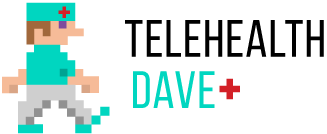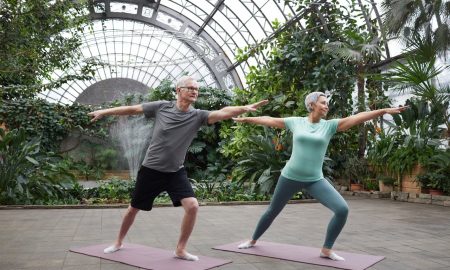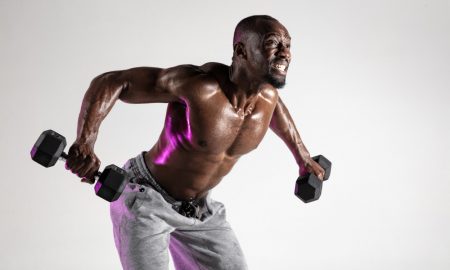
Looking to Build A Stronger Sculpted Back? Try Cable Back Workouts

Back workouts using cables, or cable back workouts as they are commonly known, have become the gold standard for anyone aiming to enhance their muscular endurance and achieve that chiseled back. These exercises provide constant tension throughout the movement, which is crucial for muscle building.
Unlike free weights, cables offer a unique resistance that can be adjusted to suit your specific training needs. Thus, this makes them a versatile option for beginners and seasoned gym-goers alike.

Cowie / Unsplash / Here’s all you need to know about back workouts using cables (cable back workouts.)
What are Back Workouts Using Cables All About?
Before we jump into the exercises, understanding the anatomy of your back can significantly enhance your workout effectiveness. Your back is comprised of several key muscle groups, including:
- Latissimus dorsi (lats:) These are the largest muscles of the back and give it a wide, tapered appearance.
- Trapezius (traps:) Located from your neck to the middle of your back, these muscles are involved in shrugging and neck movements.
- Rhomboids and Erector Spinae: These muscles lie beneath the traps and help in maintaining good posture.

Olly / Pexels / Cable back workouts target essential back muscles like lats, traps, and rhomboids.
Targeting these muscles through specific back workouts using cables ensures a comprehensive approach to back strength.
Essential Cable Back Workouts for Maximum Impact
A staple in back workouts using cables, the cable row focuses on the mid-back muscles. This exercise helps in improving posture by strengthening the rhomboids and lats.
To perform a cable row:
- Sit on the machine with your knees slightly bent.
- Grab the cable attachment with both hands.
- Pull the cable towards your waist while keeping your back straight and elbows close to your body.
- Slowly return to the starting position.
Lat Pulldown
The lat pulldown is particularly effective for targeting the latissimus dorsi, enhancing the width of your back. Here is how to do it:
- Sit down at a lat pulldown machine and secure your thighs under the pads.
- Grasp the bar with a wide grip.
- Pull the bar down towards your chest, squeezing your shoulder blades together at the bottom.
- Release the bar back up with control.
Straight Arm Pulldown
This exercise is excellent for isolating the lats without the biceps becoming too involved.

Mr. Alpha / Pexels / Straight arm pulldown is an essential cable back workout that helps isolate the lats.
To execute a straight-arm pulldown:
- Stand in front of a cable machine and hold the bar with an overhand grip.
- With your arms fully extended, pull the bar down to thigh level while keeping your back straight.
Slowly let the bar return to the starting position.
Cable Reverse Fly
For those looking to enhance their upper back and shoulders, the cable reverse fly is indispensable. It targets the rear deltoids and traps. Perform it by:
- Stand in the center of a cable crossover station.
- Cross your arms to grab the opposite handles.
- With a slight bend in your elbows, pull your arms back and out to your sides.
- Slowly return to the starting position.
How to Integrate Cable Back Workouts into Your Routine?
Incorporating these back workouts using cables into your routine can be done two to three times a week, depending on your overall fitness plan. It is essential to start with lighter weights to master the form and gradually increase the resistance as you become more comfortable with the movements.
Thus, back workouts using cables – Cable Back Workouts – are an excellent way to build strength and aesthetics in your back muscles. They allow for a range of exercises that can be tailored to your fitness level and goals. By consistently incorporating cable back workouts into your routine, you are not just working towards a more sculpted back. Rather, you are also improving your overall posture and strength. Remember, consistency is key, and with the right approach, your back will not only perform better but also look the part.
More in Fitness
-
`
Amanda Bynes Pregnant at 13? Debunking the Rumors
In recent years, the internet has been ablaze with rumors surrounding former child star Amanda Bynes, particularly regarding allegations of a...
July 1, 2024 -
`
Can Baking Soda Clean Your Lungs?
Years of inhaling cigarette smoke, pollution, and other toxins can leave you longing for a way to cleanse your lungs. The...
June 27, 2024 -
`
How to Build Muscle Mass After 60? 5 Proven Strategies
Curious about how to build muscle mass after 60? You are not alone. And the good news is that it is...
June 20, 2024 -
`
Prediabetic Foods That Can Lower Your Blood Sugar in 2024
Prediabetes is a health condition characterized by blood sugar levels that are higher than normal but not high enough to be...
June 13, 2024 -
`
Kelly Clarkson’s Weight Loss Journey | Here Are the Details
Kelly Clarkson’s weight loss has been a hot topic among fans and media alike. The iconic American singer and host of...
June 3, 2024 -
`
Essential Vitamins for Gut Health – A Comprehensive Guide
Our gut does more than just digest food – it plays a vital role in immunity, mood, and overall health. But...
May 30, 2024 -
`
How Much Water Should I Drink on Creatine? Hydration Tips
Creatine, a popular supplement among athletes and fitness enthusiasts, has gained widespread recognition for its ability to enhance muscle strength, power,...
May 17, 2024 -
`
What Is Bruce Willis’s Net Worth? Get the Inside Scoop Here!
Bruce Willis, the action hero who has saved the day countless times on screen, has built a legendary career. But how...
May 11, 2024 -
`
How to Sleep with Fluid in Lungs – Expert Tips
Living with fluid in your lungs can turn nighttime into a challenging experience, but with the right strategies, you can reclaim...
April 30, 2024















You must be logged in to post a comment Login